When renowned architect Philip Johnson completed the Glass House in 1949, it was a radical statement – one that redefined how architecture could blur the boundaries between interior and exterior. Never before had a home invited nature in so completely, with transparency as its guiding principle.
But when the sun dipped below the horizon, the very feature that made the Glass House revolutionary – its glass walls – revealed an unexpected problem: glare, reflection, and a lack of ambient warmth. In a typical home, light is shaped, reflected, and diffused by walls and partitions – and the Glass House had none. With no surfaces to temper the light, no architectural cues to define where lighting should go, and nowhere for light to land but the void, the effect was harsh and disorienting. Unsatisfied with the candelabra lamp he installed and the options available, Johnson turned to lighting designer Richard Kelly to solve the dilemma.
The result was a floor lamp that was functionally elegant, transforming the space with its soft, even glow. For all intents and purposes, it was a lightbulb moment – one that perfectly illuminated a radically new kind of home. Now, more than 70 years later, BassamFellows is bringing the iconic 1953 Floor Lamp by Philip Johnson and Richard Kelly back into production with the full support of The Glass House, the National Trust for Historic Preservation, and the Estate of Richard Kelly.
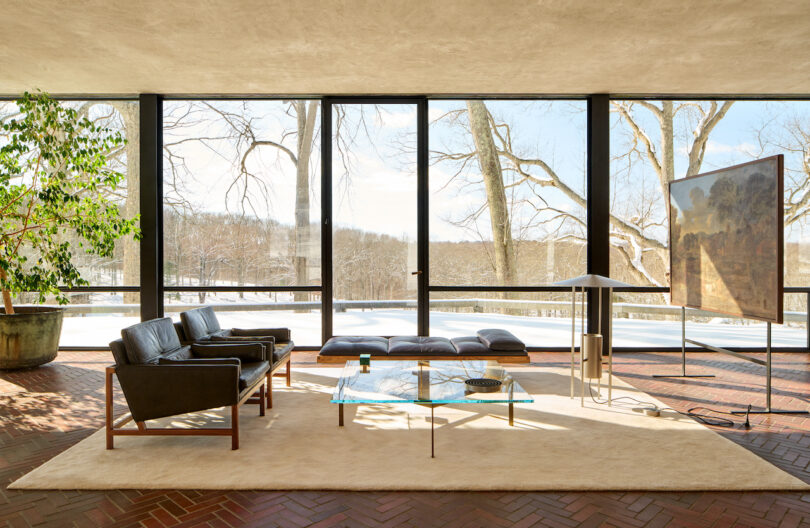
Where most would look upwards to design a light, Kelly’s eyes went to the floor. “He was my guru, the man who taught me the importance of lighting,” Johnson once said. “When I first moved into the Glass House, there was no light other than the sun. You can imagine the problem with reflections. If you had one bulb, you saw six. When it got dark outside, there wasn’t anything a lighting man could do, or so I thought. Richard founded the art of residential lighting the day he designed the lighting for the Glass House. He realized there was no other place to put the lights but the floor.”
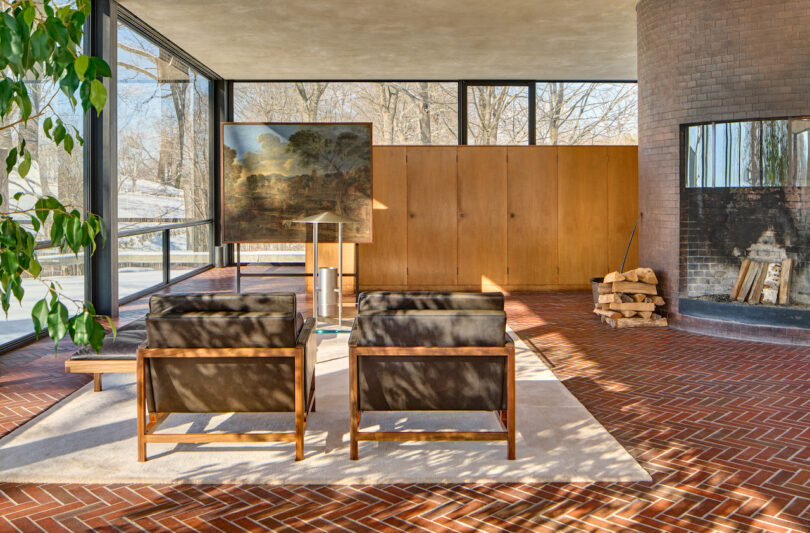
Drawing upon his knowledge of stage lighting, Kelly designed a floor lamp that concealed a high-powered bulb, positioned close to the ground. Directed upward, the light was then reflected downward by the underside of a conical shade, casting a soft, ambient pool of light without triggering harsh reflections on the glass walls. Fitted with a dimmer, the lamp allowed Johnson to adjust the delicate balance between interior and exterior as day turned into night.
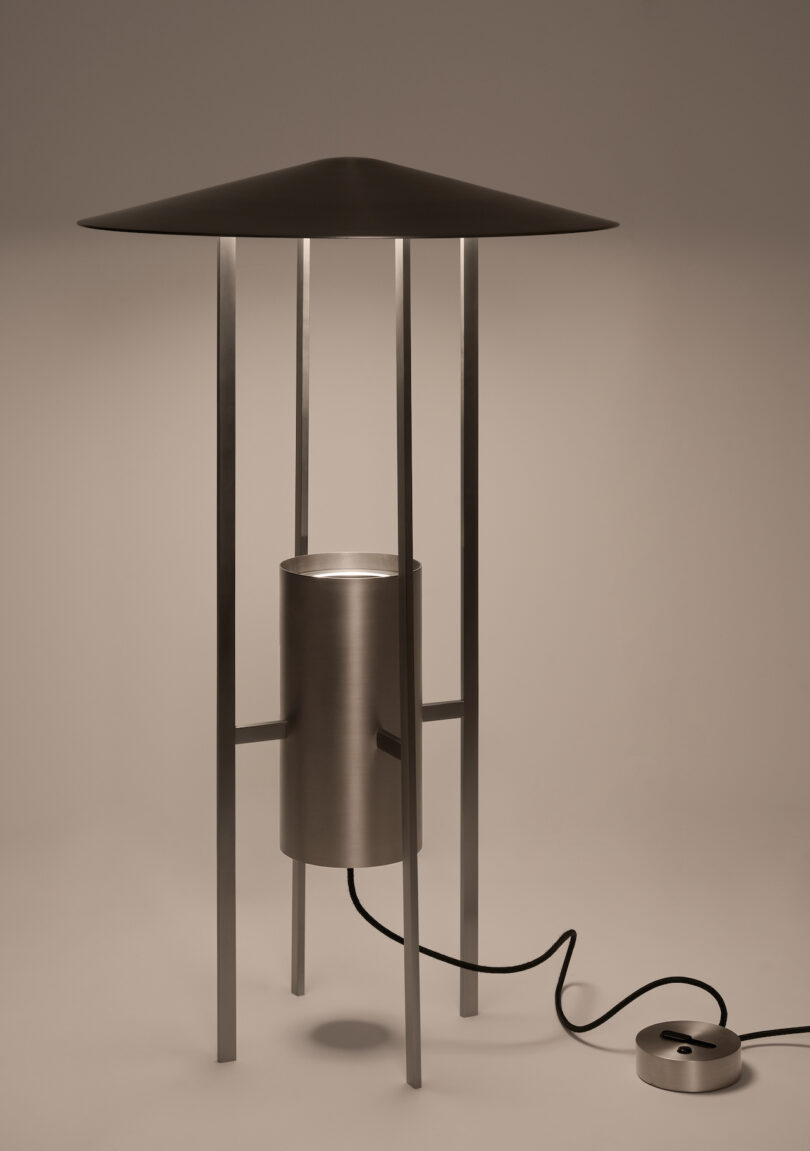
Photo: Courtesy of BassamFellows.
The 1953 lamp by Kelly and Johnson would go on to illuminate historic homes and the residences of notable art collectors of the era. It also cast its theatrical light inside the home of Richard and Geraldine Hodgson in Canaan, Connecticut – a home that now belongs to Craig Bassam and Scott Fellows. While the original lamp left with the Hodgsons, the spirit of its design lingered, inspiring BassamFellows to faithfully reintroduce it into production.
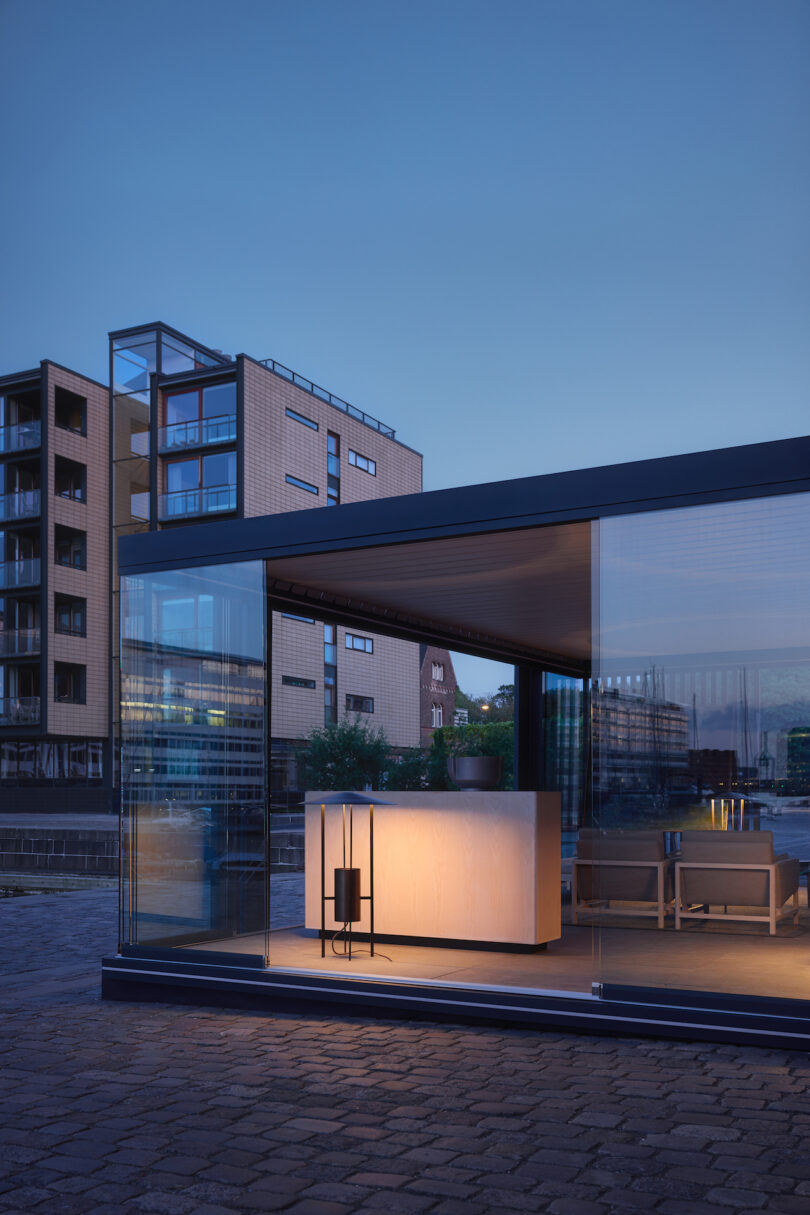
Photo: Erik Petschek.
The floor lamp stays true to its original form and function, with thoughtful updates suited for contemporary living. The lamp is crafted entirely from stainless steel – from the flat bar legs to the can and hand-spun conical shade – and is available in four finishes: Natural Stainless Steel, Blackened Stainless Steel, Bronze, and Satin Brass. The lamp comes in a single, generous size, standing just over 41 inches tall with a shade diameter of 25 inches, echoing the proportions of the 1953 original. A 30W LED light source with an integrated driver and dimmer ensures both efficiency and flexibility. All components are UL listed, preserving the lamp’s timeless silhouette while meeting today’s technical standards.
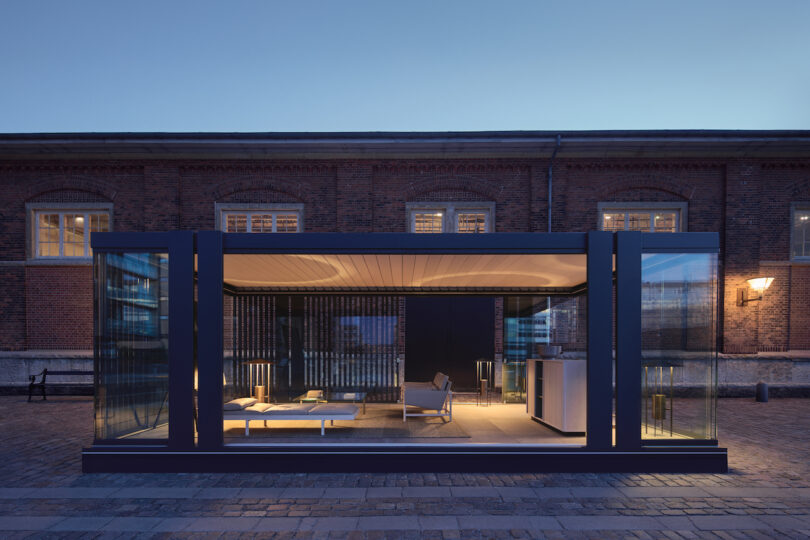
Photo: Erik Petschek.
For its debut, the lamp was featured as part of Design/Dialogue, a group exhibition curated by Ark Journal and stylist Pernille Vest during 3daysofdesign in Copenhagen. Presented in a freestanding glass pavilion designed by BassamFellows in collaboration with BT Group, the installation paid homage to the original Glass House setting. The exhibition recreates the exact furniture layout of Philip Johnson’s living room, replacing Mies van der Rohe’s iconic designs with contemporary BassamFellows pieces – all illuminated, fittingly, by the newly reissued Johnson/Kelly lamp.
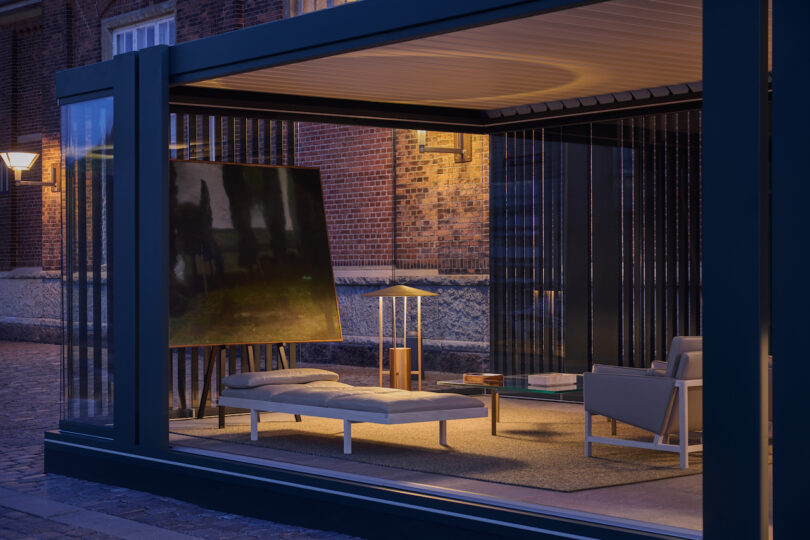
Photo: Erik Petschek
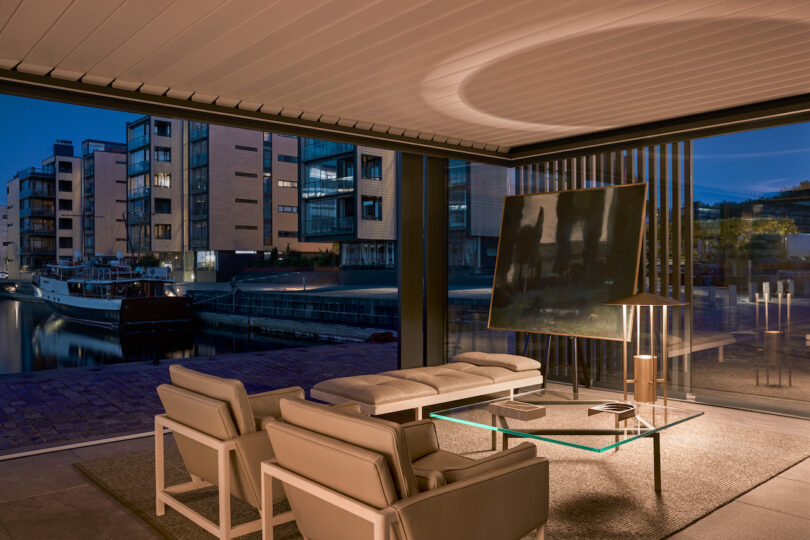
Photo: Erik Petschek
Originally created to solve a problem, the lamp would become beloved for its glow – what Kelly described as “focal glow.” It is, in his words: “The follow spot on the modern stage. It is the pool of light at your favorite reading chair. It is the shaft of sunshine that warms the end of the valley. It is candlelight on the face, and a flashlight on a stair… Focal glow draws attention, pulls together diverse parts, sells merchandise, separates the important from the unimportant, helps people see.”
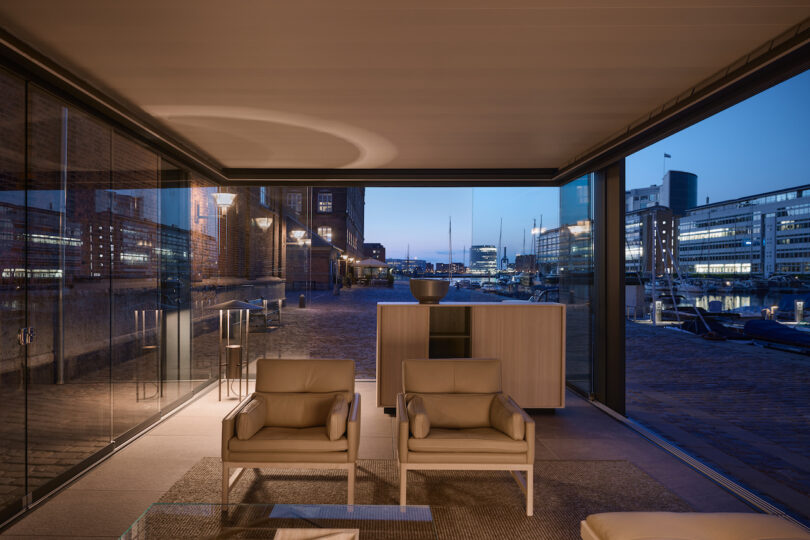
Photo: Erik Petschek
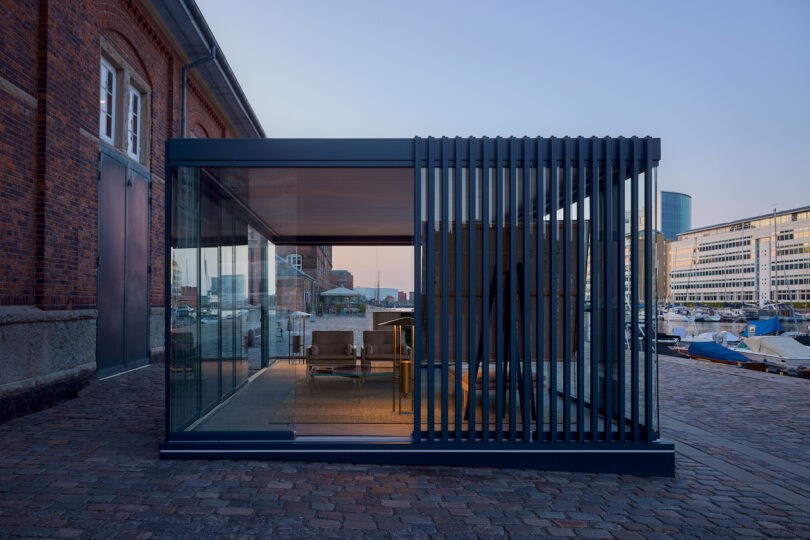
Photo: Erik Petschek
Beyond just seeing, the 1953 Floor Lamp invites us to feel – to slow down, to notice, to live thoughtfully in the space between light and shadow. Now, thanks to BassamFellows, it’s ready to illuminate a new generation of homes.
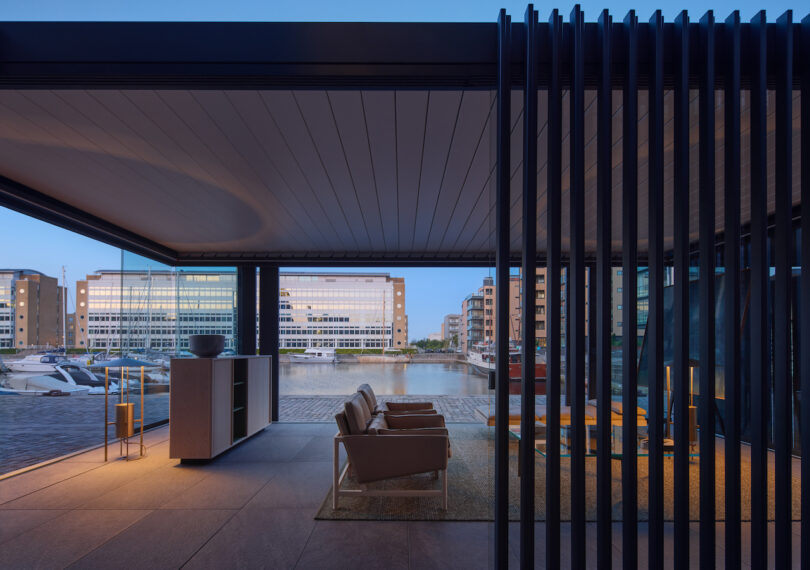
Photo: Erik Petschek
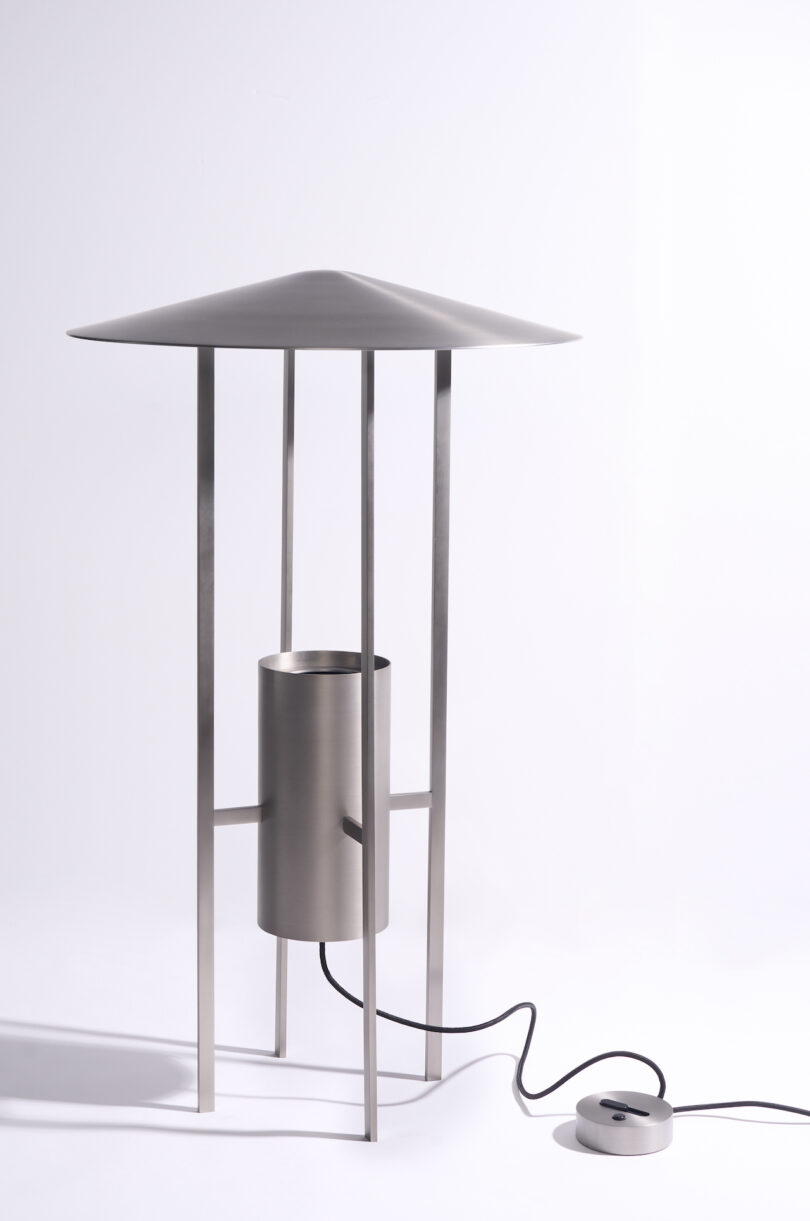
Photo: Courtesy of BassamFellows
To bring the focal glow from the 1953 Floor Lamp by Philip Johnson and Richard Kelly to your home, visit bassamfellows.com.
Photography by Michael Biondo, unless otherwise stated.

